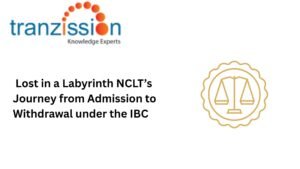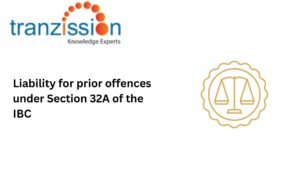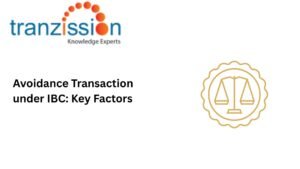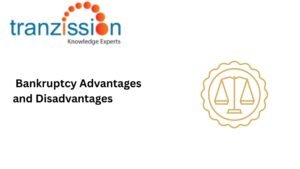
Section 9 of IBC – Insolvency and Bankruptcy Code, 2016
Table of Contents
The Insolvency and Bankruptcy Code, 2016 (IBC) provides for a speedy and efficient dispute mechanism for the resolution process. Under the IBC, the different classes of people may initiate the process, one of whom is operational creditors. Section 9 of IBC allows for an operational creditor to file an application with the Adjudicating Authority to initiate the resolution process against the company if they are owed payment for goods or services, that the company has defaulted on that payment.
Understanding Section 9 of the Insolvency and Bankruptcy Code
What is Section 9 of IBC?
Section 9 of IBC empowers operational creditors to file an application for initiating the corporate insolvency resolution process (CIRP) if the corporate debtor fails to pay an operational debt exceeding Rs. 1 crore. This section aims to protect the interests of operational creditors by enabling such individuals access to a time-bound resolution process.
Suggested Reading: Critical Analysis Of Section 29A
What is the difference between financial and operational Creditors?
The corporate debtor owes a financial debt to a financial creditor and an operational debt to operational creditors. Financial creditors have more participation in the CIRP compared to operational creditors. For instance, the Committee of Creditors (CoC) consists of financial creditors under section 21 of the IBC, hence, they have a role in deciding the revival or liquidation of the corporate debtor. Under section 53, financial creditors have higher priority than operational creditors, thereby, operational creditors have a lower rate of recovery than financial creditors.
Procedure for Initiating CIRP Under Section 9 of IBC
Step 1: Issuance of Demand Notice
The operational creditor delivers a demand notice of unpaid operational debtor copy of an invoice demanding payment of the amount involved in the default to the corporate debtor. The corporate debtor has 10 days within receiving the demand notice or copy of the invoice to bring to notice the operational creditor the existence of a dispute or record of the pendency of the suit or arbitration proceedings filed before the receipt of such notice or invoice to such dispute or the payment of unpaid operational debt.
Step 2: Filing of Application
After the expiry of 10 days from the date of delivery of the notice or invoice demanding payment, if the operational creditor fails to receive any notice of the dispute, they may file an application before the National Company Law Tribunal (NCLT) for initiating CIRP in Section 9 of IBC. With the application certain documents must also be attached:
- a copy of the invoice demanding payment or demand notice delivered by the operational creditor to the corporate debtor
- an affidavit to the effect that there is no notice given by the corporate debtor relating to a dispute of the unpaid operational debt
- a copy of the certificate from the financial institutions maintaining accounts of the operational creditor confirming that there is no payment of an unpaid operational debt
- a copy of any record with information utility confirming that there is no payment of an unpaid operational debt by the corporate debtor
- any other proof confirming that there is no payment of an unpaid operational debt by the corporate debtor or such other information.
Read more : Offences and Penalties under IBC, 2016
Step 3: Admission or Rejection by NCLT
The NCLT shall within 14 days of the receipt of the application and by an order either admit or reject it. The NCLT admits the application and communicates this decision to the operational creditor if the application is complete, there is no payment of the unpaid operational debt, the invoice or notice for payment to the corporate debtor has been delivered by the operational creditor, no notice of dispute has been received by the operational creditor or there is no record of dispute in the information utility, and there is no disciplinary proceeding pending against any resolution professional proposed. The application will be rejected if the application is incomplete, there has been payment of the unpaid operational debt, the creditor has not delivered the invoice or notice for payment to the corporate debtor, a notice of dispute has been received by the operational creditor or there is a record of dispute in the information utility, or any disciplinary proceeding is pending against any proposed resolution professional. If the NCLT decides to reject the application, a notice is given to the application to rectify the defect in his application within 7 days of the date of receipt of such notice
Key Features of Section 9 of IBC
The features under section 9 of IBC, relate to the pre-existing dispute, the minimum amount of default, and the time-bound process:
Absence of Pre-Existing Dispute:
The application will be rejected if “no pre-existing dispute” exists. If the corporate debtor can prove that a dispute regarding the debt existed before the demand notice was issued, the NCLT may reject the application.
Threshold Limit for Default:
To initiate the CIRP under Section 9 of IBC, the minimum default of the corporate debtor must be Rs. 1 crore. It was previously Rs. 1 lakh, but the threshold was increased through a notification to reduce frivolous cases and ease the burden on NCLT.
Time-Bound Process:
The IBC aims to ensure the insolvency process is completed in a timebound manner. Section 9 of IBC aligns with the overall IBC framework to ensure speedy resolution as there are time limits to deliver the demand notice, reply to this, and for the NCLT to admit or reject the application.
Judicial Interpretations of Section 9
In Mobilox Innovations Pvt. Ltd. v. Kirusa Software Pvt. Ltd. , the court held that to reject an application under section 9, the existence of the dispute and/ or suit or arbitration proceedings must be pre-existing. This case clarifies the scope of a “pre-existing dispute.” and holds that a dispute must be genuine and not merely a ploy to evade payment. The Supreme Court in Kay Bouvet Engineering Ltd. Vs. Overseas Infrastructure Alliance (India) Pvt. Ltd. ruled that a dispute can be a reason to reject an application under section 9. The National Company Law Appellate Tribunal (NCLAT) in Macquarie Bank Ltd. v. Uttam Galva Metallics Ltd. highlighted the need for the demand notice and proper documentation to initiate CIRP.
Challenges Faced by Operational Creditors Under Section 9
Burden of Proving Default:
The operational creditor has the responsibility to prove the the evidence of default, the main reason for initiating the insolvency process in IBC. It may be difficult for such creditors, particularly small creditors, to prove the default and meet the minimum threshold.
Pre-Existing Dispute Clause:
One of the factors for the NCLT to admit an application in this section is there is no pre-existing dispute between the corporate debtor and its creditors. Corporate debtors often exploit the pre-existing dispute clause to delay proceedings.
High Threshold for Initiation:
Although the intent behind increasing the minimum threshold for initiating CIRP was just, this increase has excluded many operational creditors, especially mirco, small, and medium enterprises (MSMEs), from accessing the insolvency resolution process.
Procedural Delays:
The NCLT faces procedural delays such as lengthy processing because of factors like court backlogs, complex legal procedures, frequent interim applications, and a shortage of judicial manpower. This undermines the IBC’s goal of time-bound resolution.
Recommendations for Strengthening Section 9
There are certain recommendations to address the challenges in submitting an application in Section 9:
It is recommended that the Insolvency and Bankruptcy Board of India (IBBI) introduce clearer guidelines to distinguish between genuine disputes and fabricated claims by corporate debtors.
The threshold of Rs. 1 crore may make CIRP inaccessible for MSMEs. Hence, it is suggested to lower the threshold or create a separate mechanism for small claims to address this issue.
It is recommended to establish measures to address procedural delays, such as increasing the number of NCLT benches or leveraging technology for faster case management.
The IBBI needs to introduce specialised training programs to ensure insolvency professionals can handle operational creditor cases effectively.
Comparative Analysis: Treatment of Operational Creditors in Other Jurisdictions
Chapter 11 of the US Bankruptcy Code is applicable to all types of businesses, from small-family owned companies to large public corporations. It also includes specific protections for trade creditors, ensuring fair treatment in insolvency cases. The UK Insolvency Framework incorporates creditors in the resolution process, thus promoting the inclusivity of all stakeholders in the restructuring of the corporate debtor. India can adopt the concept of including operational creditors in the resolution process from the UK to promote the involvement of all stakeholders. Further, to overcome the issues that MSMEs have in initiating CIRP, the IBC can adopt practices from Chapter 11 of the US Bankruptcy Code.
Practical Implications of Section 9 for Stakeholders
For Operational Creditors:
For operational creditors to ensure that their application is admitted, it is important for them to maintain proper documentation, including invoices and communications, to strengthen their case under Section 9.
For Corporate Debtors:
Corporate debtors need to adhere to the time limits in the IBC. They must maintain transparency throughout the process to avoid unnecessary insolvency proceedings.
For Insolvency Professionals:
Insolvency professionals have a crucial role in managing the affairs of the corporate debtor in the CIRP. They verify the legitimacy of claims and facilitate a smooth CIRP process by maintaining communication with all stakeholders.
The Way Forward for Section 9
To improve the delays in the resolution process and reduce the burden on the NCLT, there is a need for continuous refinement of Section 9. The IBBI can introduce certain legal reforms to ensure that this provision remains accessible, efficient, and equitable for all stakeholders.
Conclusion
Section 9 of the IBC allows operational creditors, like suppliers of goods or services, to initiate an insolvency resolution process against a corporate debtor if they fail to pay outstanding operational debts. It essentially provides a legal mechanism for operational creditors to pursue CIRP against a company that owes them money for goods or services delivered. Before initiating a process under section 9, the corporate debtor must be given a chance to respond to the operational creditor’s demand notice and either pay the debt or clearly state the existence of a dispute.





